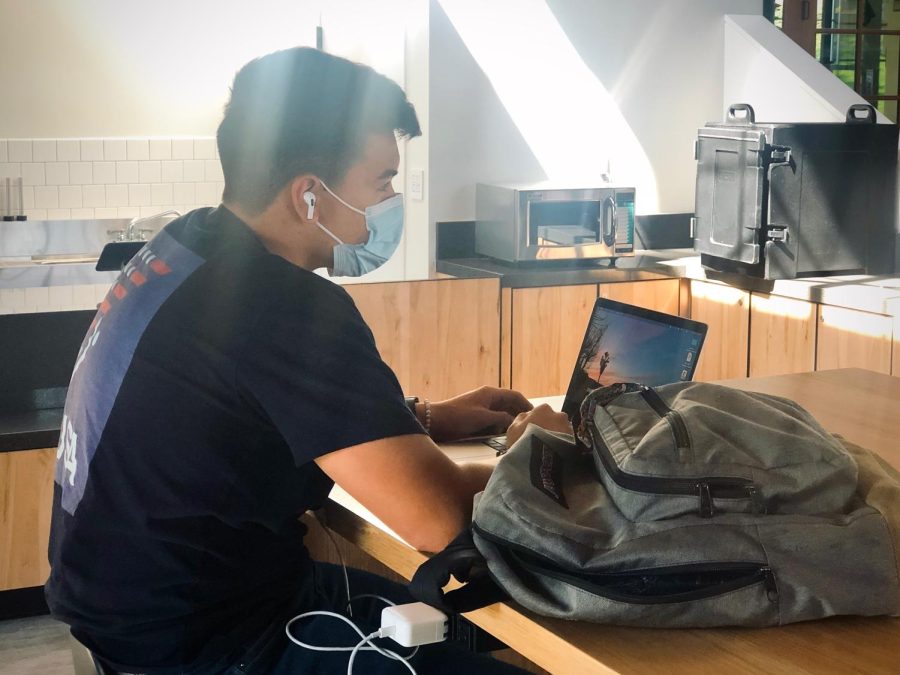Clubs are an integral part of any high school experience. At most schools, they hold a tremendous amount of influence. Along with sports and electives, clubs make up the majority of a student’s extracurricular activities.
However, Webb is not your traditional high school; amidst the craziness of 80-minute classes, leadership positions, afternoon activities, and, of course, weekend village runs, clubs exist merely as a footnote for an average Webbies’ day–and to their resumé.
On a closer inspection, however, the club culture at Webb is not simply less active than that of other schools. A quick glance at the roster is enough to prove the opposite: there are a lot of clubs at Webb.
This year, there are 60-78 clubs on campus. For a school of about 400 students, this means 20% of students have started their own club, excluding co-presidency or other leadership positions.
Even worse, the numbers show that only a few Webb students are in each club, and fewer actively participate. If every student is enrolled in a club, the average member rate is five. Far too many clubs report worse.
“The process of creating a club is very easy, as far as getting it initially approved and getting it on paper,” said Ken Rosenfeld, Dean of Campus Life. “As far as doing something with the club, it’s easy if the club was generated from a place of sincere passion. It’s incredibly challenging if you created the club for any other reason.”
The obvious reason seems to be resumé-building. After all, leading a club is the easiest way to add another extracurricular to one’s list of accomplishments, and most students would eagerly jump at a leadership opportunity.
“I’m finding that in the application process I’m seeing more overlap with each year, but the application process helps to narrow this down,” Mr. Rosenfeld said. “Whenever you have leadership opportunities, it’s hard for people to share those positions sometimes.”
What results is a hyper-inflation of clubs, in which a large group of students with similar interests is split into competing factions. Said factions in turn affect member participation rates, which directly correlate to the strength of a club. The endgame is a so-called “dead” club—one that only exists on paper.
Webb has a staggeringly high number of dead clubs. Still, there are many more reasons behind this dead zone than the allure of easy resumé-building. In fact, the trend seems to have shifted towards a genuine desire to create a community, likely because clubs have lost their appeal to colleges.
“I do think the trend is shifting away from resume-building, honestly,” Mr. Rosenfeld said. “If you can’t talk about a personal experience or reason for why you created a club or what you’re doing with it, it means nothing to [colleges]. The silver lining is we get authenticity within our club program.”
“Colleges want to see students that are involved and demonstrate certain skills and affinities if they lead a club,” said Anthony Shin, Associate Dean of College Guidance. “What’s more important is telling a story about your time at Webb, about your passions and your interests.”
So what other factors have led to the rise of dying clubs? According to the students, it’s a mixture between the hectic Webb schedule and the lack of possible meeting times during the school week.
“There aren’t many set meeting times for clubs to actually run their events,” Aiperi Bush (‘24) said. “It creates a huge hassle for people to set up a time that works for everyone. With the crazy workload most students here have, there’s also no incentive for [members] to actually attend these events.”
For many Webbies, there are simply too many competing factors for their time and attention to leave any room for clubs. The most common times for clubs to meet are during long lunches or X-Block/Flex Time on Monday and Wednesday. However, most students also use that time to catch up on homework, talk with teachers, and more. On weeks with Health and Living and leadership meetings, the chances for a club to meet diminish even more.
“Clubs aren’t a commitment to me compared to my other activities,” Ochuru Ochuru (‘23) said. “If I’m free during a club meeting, it’s a 50-50 chance whether I’ll attend or not.”
Another major hurdle for clubs to overcome is marketing. While most clubs rely on STAS to promote meetings and garner interest, many also have a dedicated email listing of club members to maximize an email’s chance to be seen. Still, more rely on physical flyers, posters, and simple word-of-mouth networking to remind every student on campus about their event.
The result? Over the months, students learn to ignore all of these tactics, leading to a sharp drop in participation rates.
STAS, as a bustling forum for student-to-student communication, provides shaky ground for clubs to market on. Amidst the college acceptances, lost water bottles and Air Pods, and random student conversations, club event emails have little chance of being seen.
“STAS is just annoying for me,” Reece Ollivierre (‘23) said. “It floods my inbox and makes it hard for me to read the actual important emails. I almost never read STAS—usually it’s all about people losing their stuff.”
Worst of all, members who do want to participate in clubs often find themselves disappointed by the limited scope by which they can operate. Most club events are small, usually involving movie-watching, discussions, and the occasional off-campus trip. Even charity, science, and activism clubs find themselves constrained by the complexities of organizing big events, especially for high schoolers. Add onto that the unique academic and social pressures of a bustling Webb community, and it becomes no surprise that so many clubs die so fast.
“I joined a lot of clubs during the club fair because they seemed interesting and I liked some of the topics,” Ochuru said. “What I find most often is that the clubs I join hold one or two meetings at the beginning of the year, then disappear. It’s gotten to the point where I don’t take meetings or events seriously.”
“It’s frustrating as an advocate to see that most of our events revolve around conversation, not action,” said Shuci Zhang (‘23), co-president of the Environmental Club. “But it’s nearly impossible to do something big without the proper planning and paperwork.”
Despite these clear hurdles, some clubs still manage to survive and even thrive. Old, established clubs like the Environmental Club, the Chinese Culture Club, and the Anime Club continue to bring in new members year after year. A possible reason for this, as Mr. Rosenfeld suggests, could be their built-in traditions and clout.
“You have certain clubs that have been around for a long time,” Mr. Rosenfeld said. “There’s a great following that comes with them because they have traditions that they continue to do, and there’s this expectation of continuing the longevity of it.”
There does seem to be a clear trend regarding which clubs do make it out of the dead zone. Part of it involves taking active leadership: planning events, collaborating with people, and spreading the word.
“What I’ve found is that about 50% of the clubs are just doing it naturally, because this is just what they want to do,” Mr. Rosenfeld said. “They’re approaching the club the way they’re supposed to—it’s a place for people with similar interests and passions to be able to connect with each other.”
So what can we do? From Webb’s administrative end, creating an environment that allows for more club meeting times is a great way to start. Changing the schedule, while highly ambitious, would give many clubs time to breathe and function during the school day. More realistically, separating the STAS cluster could give clubs more chances to be seen. Adding a “Lost and Found” email list, for example, would both allow students an easy way to search for belongings as well as declutter their overwhelmed inbox.
“I think the problem can also be moved beyond email,” Shuci said. “There should be a dedicated bulletin board listing club activities instead of having flyers all across campus.”
Beyond that, however, there is almost nothing to be done that can change the fundamental state of Webb’s clubs. They are caught in an environment with very limited time, interest, and resources, and only the strongest can survive. Yet perhaps there is a new future awaiting for those who dislike the current status quo.
Meet the Webb Native Plant Society, a collection of students whose mission is to bring sustainable and native plants to campus. Its head, Zac Wang (‘23), believes that there is no reason to turn it into a club.
“Honestly, I prefer fewer members,” Zac said. “I’d rather keep the group within a small circle of people that I can trust and know can do the hard work. If people are passionate about it, I’m not going to stop them from joining, but actually doing something is most important to me.”
Perhaps his efforts represent a new wave of student activism—instead of relying on the traditional club format, students can operate on their own, creating movements centered around action rather than subject.














